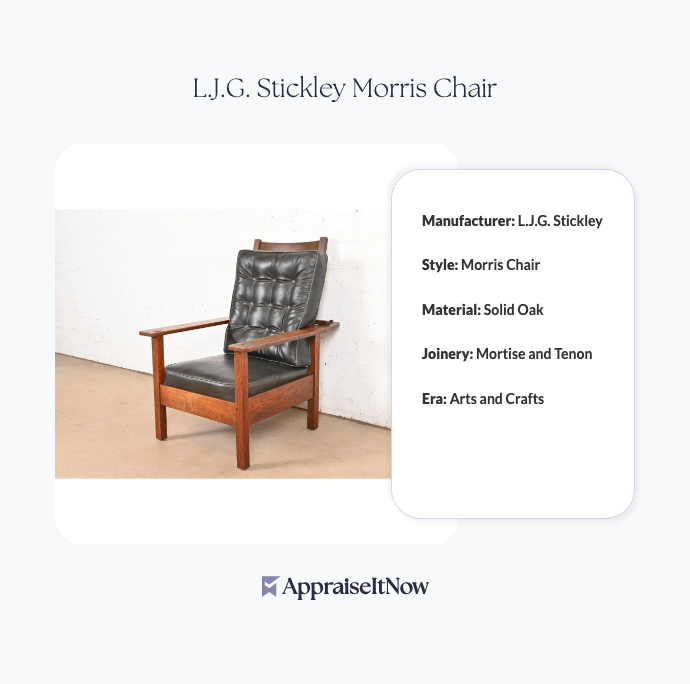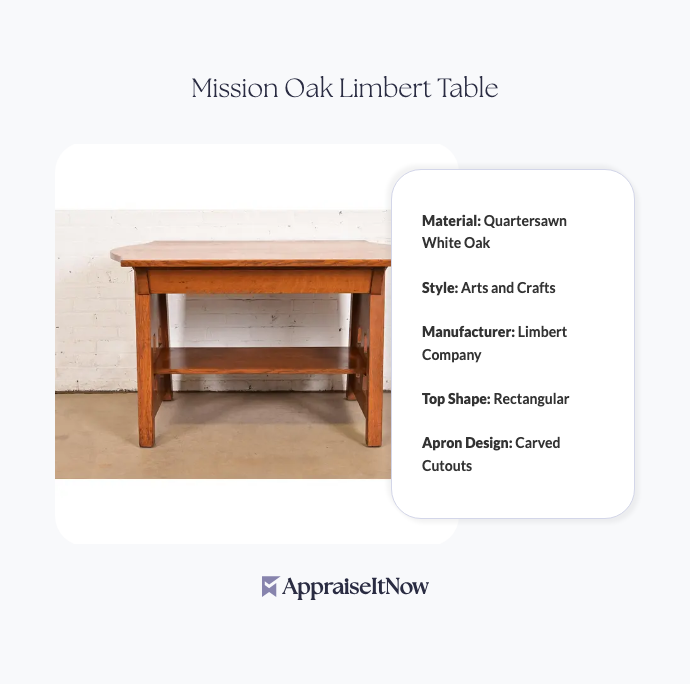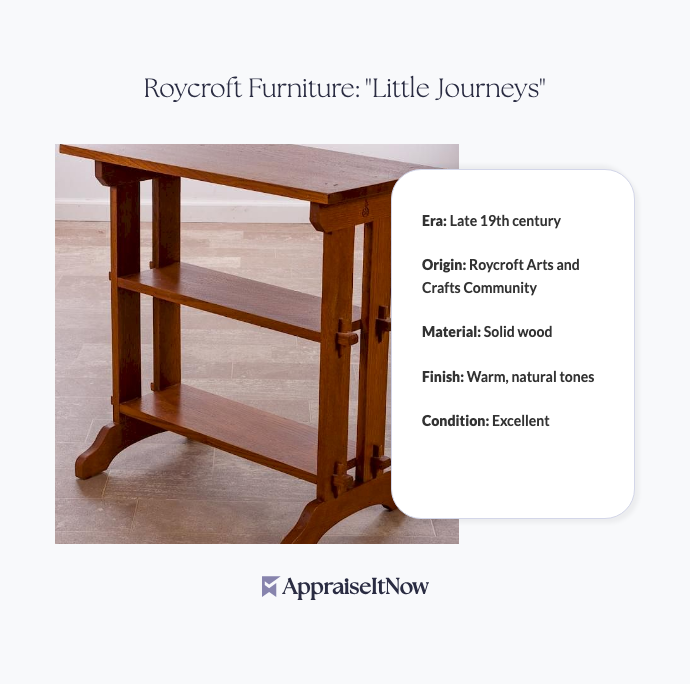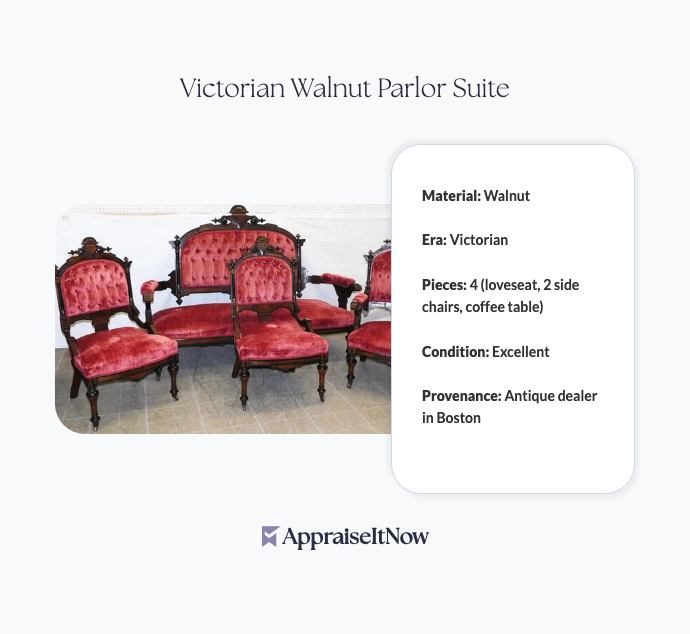<h1>How to Get Your Hepplewhite Shield Back Chair Set Appraised</h1>
<p>A Hepplewhite Shield Back Chair Set represents one of the finest examples of <strong>18th-century British furniture craftsmanship</strong>, commanding market values between <strong>$6,000 and $10,000</strong> for quality examples. Whether you've inherited these elegant chairs, discovered them at an estate sale, or are considering a purchase, understanding how to obtain an accurate professional appraisal is essential for insurance, sale, or collection authentication purposes.</p>
<h2>Understanding Your Hepplewhite Shield Back Chair Set</h2>
<p>The chairs you're evaluating were likely crafted in the <strong>1780s and beyond</strong>, during the height of George Hepplewhite's influence on Neoclassical design. These pieces are characterized by their distinctive shield-shaped backrests, tapered and slightly curved legs, and subtle floral carving accents that distinguish them from other period furniture. The seats are typically upholstered in fine fabric, and construction uses solid hardwood throughout—hallmarks that collectors and appraisers immediately recognize.</p>
<p>Your Hepplewhite set's value derives from multiple interconnected factors. The quality of craftsmanship, the rarity of the design, and the enduring appeal of Hepplewhite's work all contribute significantly to appraisal value. When considering <a href="/types/antique-furniture">antique furniture appraisals</a>, understanding these fundamentals helps you communicate effectively with professional appraisers and set realistic value expectations.</p>
<div class="callout tip"><p><strong>Collector's Insight</strong></p>
<p>Complete sets of Hepplewhite chairs command substantially higher premiums than individual pieces—a full dining set can appreciate 30-50% more than the sum of its parts.</p></div>
<h2>What Makes Your Hepplewhite Chairs Valuable</h2>
<p>Several specific characteristics determine where your set falls within the <strong>$6,000–$10,000 valuation range</strong>. The <strong>number of chairs</strong> in your set matters tremendously—a four-chair set values considerably less than a six or eight-chair dining set. Original upholstery, even if worn, typically increases value compared to recently reupholstered examples, since collectors often prefer to handle restoration themselves using period-appropriate materials.</p>
<p>Matching serial numbers or maker's marks, if present, add significant authenticity premiums. The wood type—whether mahogany, walnut, or satinwood—affects desirability, with mahogany being most common and valued. Structural integrity is paramount; loose joints or replaced legs substantially reduce value. When was Hepplewhite furniture popular? These pieces peaked in desirability from the 1780s through the 1810s, and examples from this earlier period typically command higher prices than later reproductions.</p>
<p>The condition of the shield back itself is critical. Intact, undamaged backrests in original configuration are far more valuable than repaired or altered examples. How can you tell if a Hepplewhite is real? Genuine pieces feature hand-cut joinery, period-appropriate tool marks, wood grain characteristics consistent with 18th-century timber, and wear patterns that reflect authentic age rather than artificial distressing.</p>
<h2>Finding the Right Appraiser for Your Chairs</h2>
<p>Your first step involves locating an appraiser with specific expertise in <a href="/types/furniture">antique furniture</a>. Not all furniture appraisers possess the specialized knowledge required to accurately value Hepplewhite pieces. You want someone credentialed through recognized organizations—look for appraisers holding credentials from the <strong>AAA (American Association of Appraisers), ISA (International Society of Appraisers), ASA (American Society of Appraisers), CAGA, or AMEA</strong>. These certifications indicate the appraiser has met rigorous standards and maintains professional ethical obligations.</p>
<p>AppraiseItNow connects you with credentialed experts across the U.S. who specialize in <a href="/blog/what-you-need-to-know-about-antique-furniture-appraisals">antique furniture appraisals</a> and understand the nuances of period-specific valuation. Rather than relying on general antique dealers who may lack formal appraisal training, professional appraisers follow <strong>USPAP (Uniform Standards of Professional Appraisal Practice)</strong>, ensuring your valuation is legally defensible and industry-standard.</p>
<div class="callout note"><p><strong>Selection Criteria</strong></p>
<p>When choosing an appraiser, verify their experience specifically with English furniture from the 1780s-1800s period. Ask about their familiarity with distinguishing authentic pieces from later Victorian reproductions.</p></div>
<h2>Preparing Your Chairs for Appraisal</h2>
<p>Before your appraiser arrives, gather comprehensive documentation about your Hepplewhite set. Photograph each chair from multiple angles—front, back, sides, close-ups of the shield back, leg details, and any maker's marks or labels. Document the upholstery condition and any visible wear or damage. Note the dimensions of each chair and the overall set, as these specifications influence valuation.</p>
<p>Compile any provenance information you possess: family history, previous ownership documentation, auction house receipts, or insurance records. If you know the set's history—whether it came from a particular estate, auction house, or dealer—include those details. This context significantly impacts appraisal value, particularly if your chairs have documented exhibition history or ownership by notable collectors.</p>
<p>Clean your chairs carefully before appraisal, but avoid refinishing or repairing them. Professional appraisers prefer to evaluate pieces in their current state to properly assess originality and authenticity. What is the 2/3 rule furniture? This principle suggests that restoration costs typically shouldn't exceed two-thirds of the piece's value—a consideration appraisers factor into their assessments when determining whether restoration is economically justified.</p>
<h2>The Professional Appraisal Process</h2>
<p>When your appraiser examines your Hepplewhite Shield Back Chair Set, they'll conduct a thorough evaluation examining construction techniques, wood species, joinery methods, and wear patterns. They'll assess upholstery condition, structural integrity, and the authenticity of any repairs or modifications. The appraiser will research comparable recent sales of similar Hepplewhite sets to establish market value through comparative analysis.</p>
<p>Your appraiser will document findings in a detailed report including high-resolution photographs, condition assessment, historical context, and final valuation supported by market research. This report becomes your official documentation for insurance, sale, estate planning, or legal proceedings. The entire process typically requires 2-4 hours of hands-on evaluation plus research time.</p>
<p>Understanding the value of <a href="/blog/understanding-the-value-of-antique-furniture-examining-quality-and-rarity">antique furniture</a> requires examining quality and rarity factors that only experienced professionals can properly assess. Your appraiser will explain how these elements specifically affect your set's valuation, helping you understand whether your chairs represent investment-grade pieces or primarily hold sentimental value.</p>
<h2>Using Your Appraisal for Insurance and Sales</h2>
<p>Once you receive your appraisal, the value documented becomes crucial for protecting your investment. If you're insuring your Hepplewhite chairs, your homeowner's or renter's policy typically covers only a portion of high-value antiques unless you obtain specific appraisals. Professional valuations establish "agreed value" coverage, ensuring replacement cost if your chairs are damaged or stolen.</p>
<p>For selling purposes, your appraisal provides defensible pricing when marketing to dealers, auction houses, or private collectors. Is it safe to use a 30-year-old high chair? While this question addresses different furniture entirely, it highlights how appraisals serve different purposes than general condition assessments—appraisals focus on market value and authenticity rather than functional safety. If you're consigning to an auction house, they often require recent appraisals from independent professionals to establish realistic estimates and reserve prices.</p>
<div class="callout tip"><p><strong>Pro Tip</strong></p>
<p>Update your appraisal every 3-5 years to reflect current market conditions. Antique furniture values fluctuate based on design trends, collector demand, and economic factors—what is hot in antiques right now differs from past years.</p></div>
<h2>Market Context for Hepplewhite Furniture</h2>
<p>Understanding current market dynamics helps contextualize your appraisal. The most valuable antique furniture typically includes Chippendale, Queen Anne, and Federal pieces alongside Hepplewhite examples. Your shield back chairs occupy a strong position within this hierarchy, particularly if they date to the 1780s-1800s production period. While asking what the most expensive chair in history might sell for points toward unique designer pieces or iconic examples like Steve Jobs' famous furniture selections, quality Hepplewhite sets represent reliable, appreciating investments for serious collectors.</p>
<p>The antique furniture market values authenticity and provenance increasingly highly. Pieces with documented ownership history, particularly if they belonged to notable collections or institutions, often exceed standard valuations by 20-40%. The relationship between quality and rarity means that complete, well-preserved Hepplewhite sets—particularly dining suites with six or more chairs—remain among the most sought-after <a href="/types/household-goods">household goods</a> in the antique marketplace.</p>
<h2>Market Appreciation and Long-Term Value</h2>
<p>Hepplewhite furniture has demonstrated consistent appreciation over decades. Unlike trendy furniture that loses value quickly, these period pieces represent enduring investments. The historical significance of George Hepplewhite's design influence on English furniture ensures continued collector interest. Additionally, the finite supply—no new production is possible—provides price support that helps your investment appreciate alongside economic inflation and increased collector wealth.</p>
<p>Is 100 year old furniture worth anything? Absolutely, and furniture approaching 250 years old holds significantly more value. Your Hepplewhite chairs, if authentic and well-preserved, benefit from this appreciation trajectory. Professional appraisals document this value, protecting your interests whether you're building a collection, planning an estate, or preparing for sale.</p>
<h2>Why Choose Professional Appraisal Services</h2>
<p>Attempting to value your Hepplewhite set through online searches, dealer consultations, or auction house estimates risks substantial undervaluation. Professional appraisers bring specialized expertise, market knowledge, and credentialed credentials that general sources cannot match. Your appraisal becomes admissible documentation for insurance claims, legal proceedings, and loan collateral purposes—purposes that online valuations cannot serve.</p>
<p>AppraiseItNow provides USPAP-compliant appraisals from credentialed experts who understand <a href="/blog/getting-started-with-antique-furniture-appraisal">antique furniture appraisals</a> through years of specialized experience. The investment in professional appraisal typically represents 3-5% of your furniture's value—modest insurance against undervaluation or documentation gaps that could cost thousands if problems arise later.</p>
<div class="callout note"><p><strong>Key Takeaway</strong></p>
<p>Your Hepplewhite Shield Back Chair Set represents a significant asset valued between $6,000–$10,000. Obtaining a professional USPAP-compliant appraisal from credentialed experts protects your investment, documents authenticity and condition, and provides defensible valuations for insurance, sales, or estate planning purposes. With AppraiseItNow, the process is straightforward—submit photographs and descriptions securely online and receive certified appraisals from specialists who understand the nuanced factors driving Hepplewhite furniture values.</p></div>
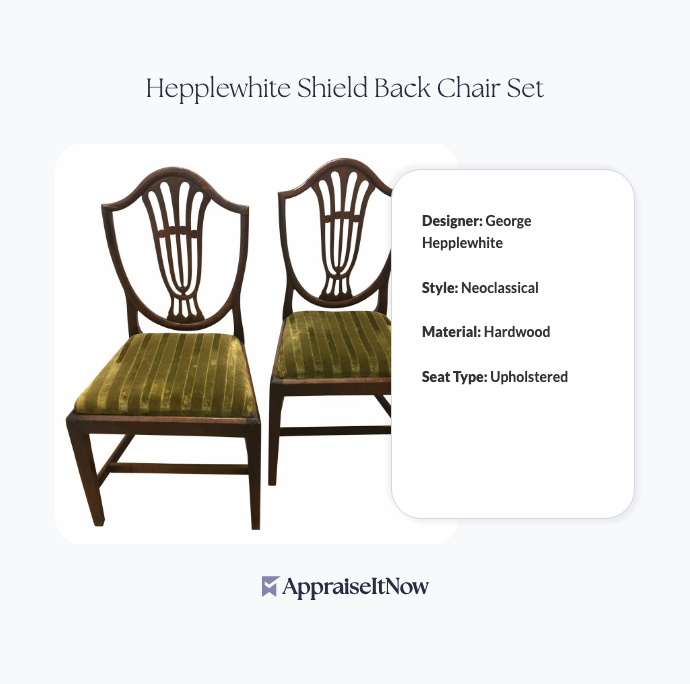






.avif)




